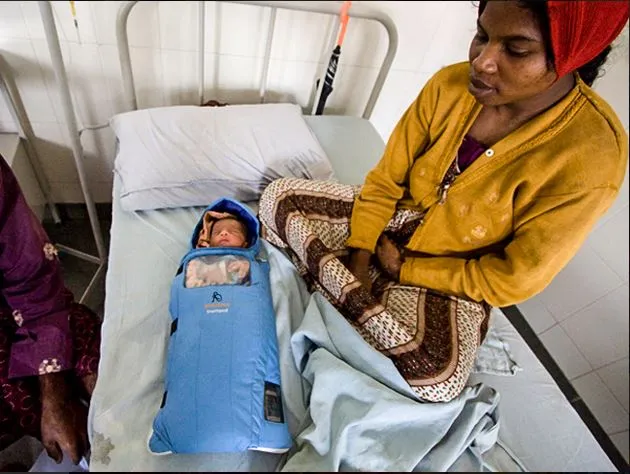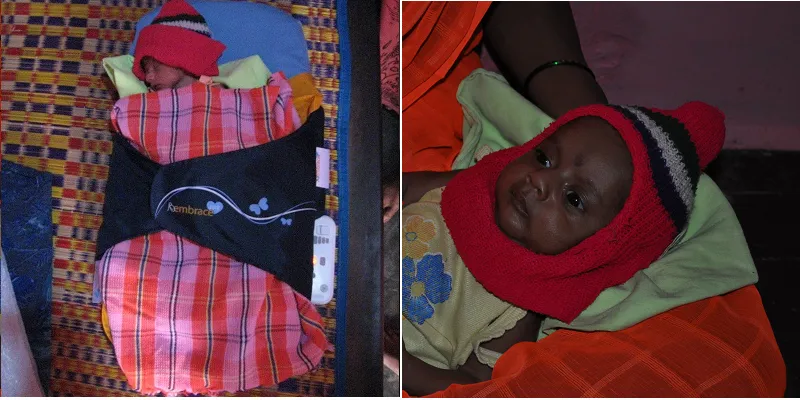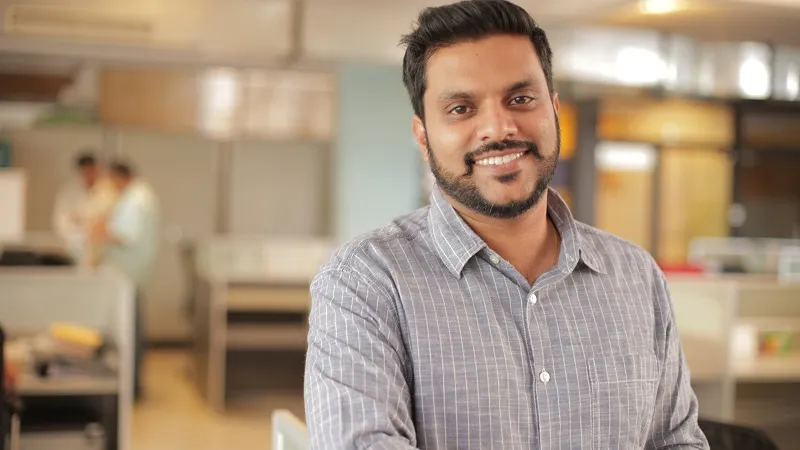Combating neonatal hyperthermia with Embrace Innovations' affordable and portable baby warmers
Neonatal hypotheria is the leading cause of death in premature babies. Keeping a baby warm can avert this and help a premature baby gain weight (weight gain being an indicator of improving health in premature babies). Traditional incubators cost the earth and need continuous electrical supply. That can pose a problem especially in rural areas. Another problem traditional incubators pose in rural areas is their sheer complexity and therefore requires rigorous training of medical staff. And the last straw, once the equipment breaks down in rural areas, there is no one to fix it.
Enter Embrace Innovations. The Embrace Nest, launched in 2012, is an easy-to-use, portable infant warmer that does not need continuous power supply. Designed for hospitals and ambulances, it is used in NICUs and wards, and for transport, when skin-to-skin care (which helps in keeping the baby warm) is not possible. Embrace was founded by Rahul Panicker, Jane Chen, Linus Liang, and Naganand Murty.

Lakshamma, belongs to the Lambani tribe. Her family works as labourers and their monthly income is under Rs 1000. Lakshamma’s premature baby weighed 1.6 kg (3.5 pounds) and needed thermal support. She would have found it very difficult to pay the Rs 250 per day required to keep her baby in the NICU and the nearest healthcare facility is about 24 kms away. Instead, the doctor placed her baby in the Embrace infant warmer, which costs patients Rs 75 per day, and helped save her life.

Another story is of Baby Vetrivel who was born a month premature to Mariammal, who stays in Krishnagiri, Tamil Nadu. The father of the baby is an itinerant fortune teller. He goes from house to house with a pack of cards and a parrot in a cage. Vetrivel was put in an Embrace baby warmer and in two months he went from 1.6 kg to 3.0 kg.
Going back to the beginning
Rahul Panicker graduated from IIT Madras with a degree in electrical engineering in 2002. He took up MS at Stanford. He was offered to stay on for a PhD, an offer he took up. Stanford is also home to the D School, an institute on campus that offers courses but no diploma. D school was just starting out when Rahul was at Stanford and owing to lack of space back then, it operated from a trailer van parked inside the campus!
“Think of it like a lab on campus. I’d gone and spent some time there and I really liked the people there. It’s a place where a lot of right brain thinking was encouraged.”

Rahul had been in Silicon Valley for three years and the entrepreneurship bug bit him then. “Around the same time Google had gone public and Facebook was buzzing everywhere. By osmosis you learn a lot. To see business and technology as a way to scale solutions.”
D school brought the jigsaw pieces together.
Never in our education are we taught where to find the right problems to solve. A lot of innovation lies in framing the problem right. By right problems, I don’t mean at a large level, a well-defined problem sort of solves itself and that’s where a lot of innovation happens.
The project that started it all
D school launched a course “Entrepreneurial design for extreme affordability”, which was focused on designing products for the developing world. Rahul was on the last leg of his thesis and taking up this course would have meant pushing out his graduation because he just didn’t have the time or money to do both. Confounded, he went to Bernie Roth, one of the founders of D school and told him about his dilemma. Bernie said,
You can either not take the class and graduate on time or you can push out your graduation and take the class or you can choose to be superman and do both!
Rahul decided to take it up!
The course that changed the course
“IIT was a tech school, Stanford is a University. I had neighbours who were economists, political scientists, law students from different geographies. D school hence helped in relating to people and their issues.”
The course had partner organizations who gave the students a broad area to find a problem and a solution. Medicine Mondial, an NGO from Nepal, was experimenting with neonatal equipment. The team from Medicine Mondial said that incubators are traditionally glass boxes that heat and wanted a cheaper one. Rahul, Jane and a couple of others worked as a team for this project. “We soon realized that we can make a cheaper glass box but that’ll only reach few extra babies. It’s not going to make a quantum difference“ During the research for the project, Rahul and Jane came to understand that the real need was in small towns and rural areas. He also found that low cost was not always the solution since so many incubators that were donated to some rural area were just sitting idle. “Our healthcare system is very different from that of the west. Doctor to patient ratios, training medical staff are all issues we’re still struggling with.”
Rahul, Jane and the rest of the team rethought the solution. They came up with a baby warmer that used phase change material to keep the baby warm. By the end of their term, they produced a functional prototype, a service and delivery plan, and hoped the founder would take it forward. However, the NGO still wanted a cheaper glassbox.
Degrees vs Education
“At that point had no plans to start something. But we kept tinkering on the side. Our research also told us about the scale of impact that was possible. We decided that if we don’t do something about it, no one else would. It would just sit on a shelf.”
It boiled down to personal questions for Rahul and Jane(who was at the Stanford B school, class of ’08). Rahul says,
My thought process was – If I don’t do this right now because I have more lucrative opportunities it would mean that the most important problems in the world should be left to people who do not have better opportunities. Something about that did not make sense. My degrees would have held me in good stead but I would have failed my education.
Sheer hard work and grit
Jane and Rahul won a business plan competition at Stanford which had a prize money of $25, 000. “The judges liked us so much that they gave us an additional 10, 000 USD.” They also won the echoing green fellowship of $90,000 over 2 years. This total of $125k was their seed money.
To tide through, Rahul took up a job in Silicon Valley. He spent his nights and weekends to work on the project and the research. He used his leaves to come back to India whenever he could and spend time on research. He went to 14 states across the country spending time in people’s homes, govt. hospitals and private clinics. Rahul quit his job in 2009. Jane graduated in 2008 and started focusing on raising money.
In their earlier days angel investment came from Kiran Majumdar Shaw, and Ranjan Pai of Manipal. Series A was backed by Vinod Khosla and Capricorn Investment. Series B was backed by Mark Benioff, the CEO of Salesforce.com.
Challenges, triumphs and future plans
It took them about 3 years to launch the product in 2012. “It is very easy to make a prototype, but to make a safe medical device in line with all the regulatory acts is an uphill task. India at that point didn’t have guidelines. Even then, it is barely there. We had the choice of not sticking to any guidelines since India didn’t need them but it wasn’t a good idea for scaling. We’re CE marked and are good enough to sell in Europe. The manufacturing facility is certified and audited to manufacture medical devices of this grade.”

Selling these incubators was also not easy. “It wasn’t just selling a product. The hospital had never seen a warmer or an incubator look like this. It took special skill to make these sales”, says Rahul. Raghu Dharmaraju, now COO, played a key role in driving sales back then and continues till today. Raghu is an IIT Madras grad, who went onto to get an MBA from Cornell, but he chose to come back to work for a social enterprise.Rahul says that good degrees helped establish some credibility. “We just had to find our early adopters. Out of 10 we’d approach, 1 would take it up.”
When they reached about 300 hospitals, the government started taking note. “Understandably, it is very hard for the government to take up a new product, that too a medical device. But in this case, bureaucrats saw this and felt that this could be useful. I went and met the health secretary, Rajeev Sadanandan, and he said – let’s start.” It started with 5 units in Kerala, which became 50 units in Rajasthan in Baran district and 500 units in Karnataka. So far Embrace has encircled 1,50,000 babies in its protective hug!
Embrace plans to explore rental models. They conducted a pilot with ASHA workers in Karnataka that went well. In the near future, Embrace plans to delve into monitoring and diagnostics capabilities. They plan on using cell phone connectivity and modern sensors for early detection of diseases like Pneumonia and Sepsis.
We’re not selling a product, we’re trying to change a practise and it takes time. Our first goal is that we want to see change policy and healthcare practices. The public health world is not fast moving. We’d like to bring about change. Our vision is to see every baby celebrate his/her first birthday. Along the way, second goal is to show young qualified individuals who have stellar degrees that there are pathways possible where you can use education and market based forces to try and solve problems of the world. More success stories and role models are needed. If we can provide examples and be one of the examples, then we’ll see more people making these choices.







